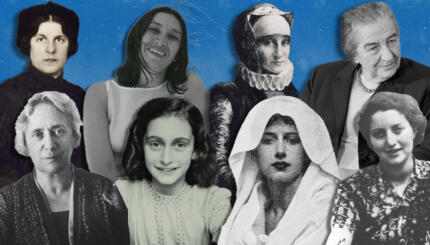Judaism, a religion that focuses primarily on life, rather than the afterlife, provides a meticulous set of standards regarding the handling of corpses, which must be shown great respect. The body is washed, dressed in a simple gown, and never left alone before burial. All of these ministrations are carefully provided by a synagogue or community hevra kadisha, or holy committee.
Because the body is traditionally cared for by those of the same gender, making sure that a hevra kadisha is informed about and sensitive to the needs of transgender and genderqueer people is very important.
Here, Eliron Hamburger, a hevra kadisha member at Chochmat HaLev, in Berkeley, provides a checklist for all hevra kadisha members to consider. The answers may vary from community to community, but the questions themselves are thought-provoking, challenging us to look at this life-cycle event through the lens of transgender inclusion. Consider bringing it to the ritual committee at your synagogue or sharing with your family.
It is our goal to be respectful and welcoming of all gender identities and expressions.
• How will our hevra kadisha communicate to our broader community that we are sensitive to gender identity issues?
It is our goal that the hevra kadisha emissaries be skilled to invite communication from the meit’s (deceased’s) family/friends about gender identity issues and be able to identify and address issues that arise.
• What training does the hevra kadisha emissary need in order to be sensitive to, and prepared for, any gender identity issues that they may encounter?
• What resources does the hevra kadisha provide to the meit’s friends/family members?
It is our goal to assure that a meit’s body, regardless of gender expression or identity, be guarded from inappropriate physical contact or other indiscretions, and that all hevra kadisha members are appropriately trained, supported and prepared for what they may encounter in their role as the shmira (the guard who watches over the body).
• What skills does the shmira need to address this issue and can the hevra kadisha support such skill-building?
It is our goal to have safe, available facilities to perform rechitza (washing the physical body) by a trained, prepared and appropriately gendered tahara team (who will perform the washing) based on respect for the meit.
• What is the most respectful practice for a meit who is transgender?
• What arrangements/advance preparations do we need to make so that the rechitza can be performed by a tahara team whose gender composition is most respectful for the meit?
It is our goal to offer appropriate prayers befitting the meit’s own gender representation.
• What prayers or translations can be offered that are the most respectful for a meit who preferred non-gendered pronouns?
It is our goal to have tachrichim (burial shrouds) available and suitable for all gender identities and expressions.
• How will the hevra kadisha assure it has tachrichim that respects all gender expressions and what is the process for selecting tachrichim for a meit?
Are there other practices, questions or angles you think a hevra kadisha should consider? We hope you’ll continue the conversation by leaving your thoughts in the comments section below.


